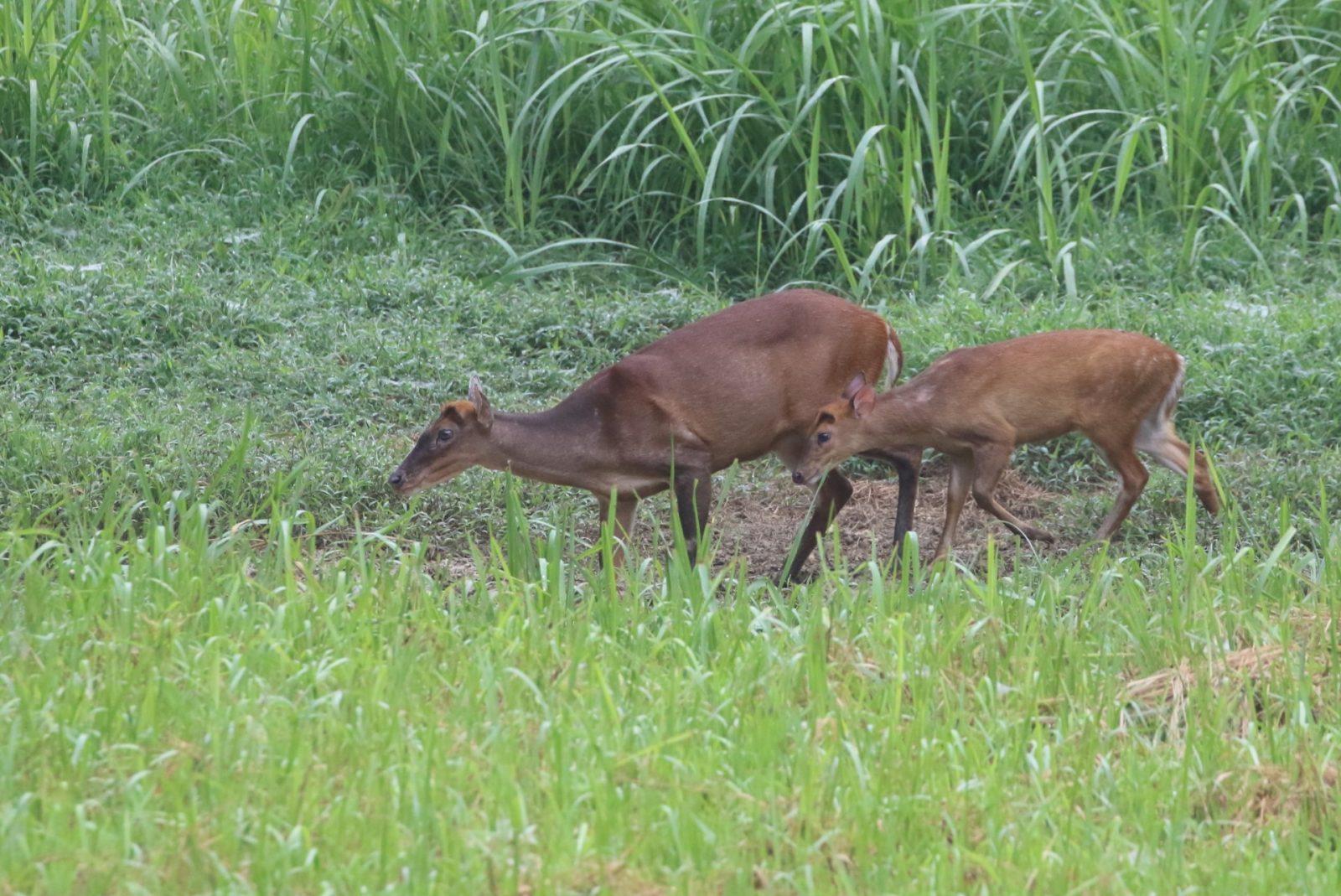
Southern red muntjac (formerly known as the Indian muntjac)

The southern red muntjac is a deer species native to Southeast Asia. It was formerly known as the Indian muntjac or the common muntjac before the species was taxonomically revised to represent only populations of Sunda and perhaps Malaysia. The other populations being attributed to this species are now attributed to Muntiacus vaginalis (Northern red muntjac). Muntjacs are also referred to as barking deer. It is listed as Least Concern on the IUCN Red List.
This muntjac has soft, short, brownish or grayish hair, sometimes with creamy markings. It is among the smallest deer species. It is an omnivore and eats grass, fruit, shoots, seeds, bird eggs, and small animals, and occasionally scavenges on carrion. Its calls sound like barking, often when frightened by a predator, hence the common name “barking deer”. Males have canines, short antlers that usually branch just once near the base, and a large postorbital scent gland used to mark territories.
There were 15 subspecies included under the species in the recent analysis
- M. m. annamensis, Indochina
- M. m. aureus, peninsular India
- M. m. bancanus, Belitung and Bangka Islands
- M. m. curvostylis, Thailand
- M. m. grandicornis, Burmese muntjac, Burma
- M. m. malabaricus, South India and Sri Lanka
- M. m. montanus, Sumatran or mountain muntjac, Sumatra
- M. m. muntjak, Javan muntjac, Java and south Sumatra
- M. m. nainggolani, Bali and Lombok Islands
- M. m. nigripes, black-footed or black-legged muntjac, Vietnam and Hainan Island
- M. m. peninsulae, Malaysia
- M. m. pleicharicus, South Borneo
- M. m. robinsoni, Bintan Island and Lingga Islands
- M. m. rubidus, north Borneo
- M. m. vaginalis, Burma to southwest China
It should be noted, that 2 former subspecies have been lifted to species level. These are Malabar red muntjak and the northern red muntjac.
Predators of these deer include tigers, leopards, clouded leopards, pythons, crocodiles, dholes, Asiatic black bears, fishing cats, Asian golden cats and golden jackals. Foxes, raptors and wild boars prey on fawns.
Paleontological evidence proves that Southern red muntjacs have been around since the late Pleistocene epoch at least 12,000 years ago. Scientists are interested in studying muntjacs because between species, they have a wide variation in number of chromosomes; in fact, the southern red muntjac has the lowest recorded number of chromosomes of any mammal, with males having a diploid number of 7 and females having 6 chromosomes. They are the oldest known members of the deer family, and the earliest known deer-like creatures had horns instead of antlers, but the muntjac is the earliest known species to actually have antlers.
Southern red muntjacs are hunted for sport and for their meat and skin around the outskirts of agricultural areas, as they are considered a nuisance for damaging crops and ripping bark from trees.
As I have mentioned many other times on other species, while this species is listed as least concern, given the large number of predators, and the amount of hunting that goes on, it is probably at risk of local extinction in any place where the quantity of hunted animals increase. As such, the species as a whole, and each subspecies should be watched, and law makers need to be ready to restrict hunting if it becomes necessary (it seems to a species, which in many places sits at the bottom of the food chain – meaning that any damage to its population is likely to effect many other species such as tiger, leopard wolf and many more.










